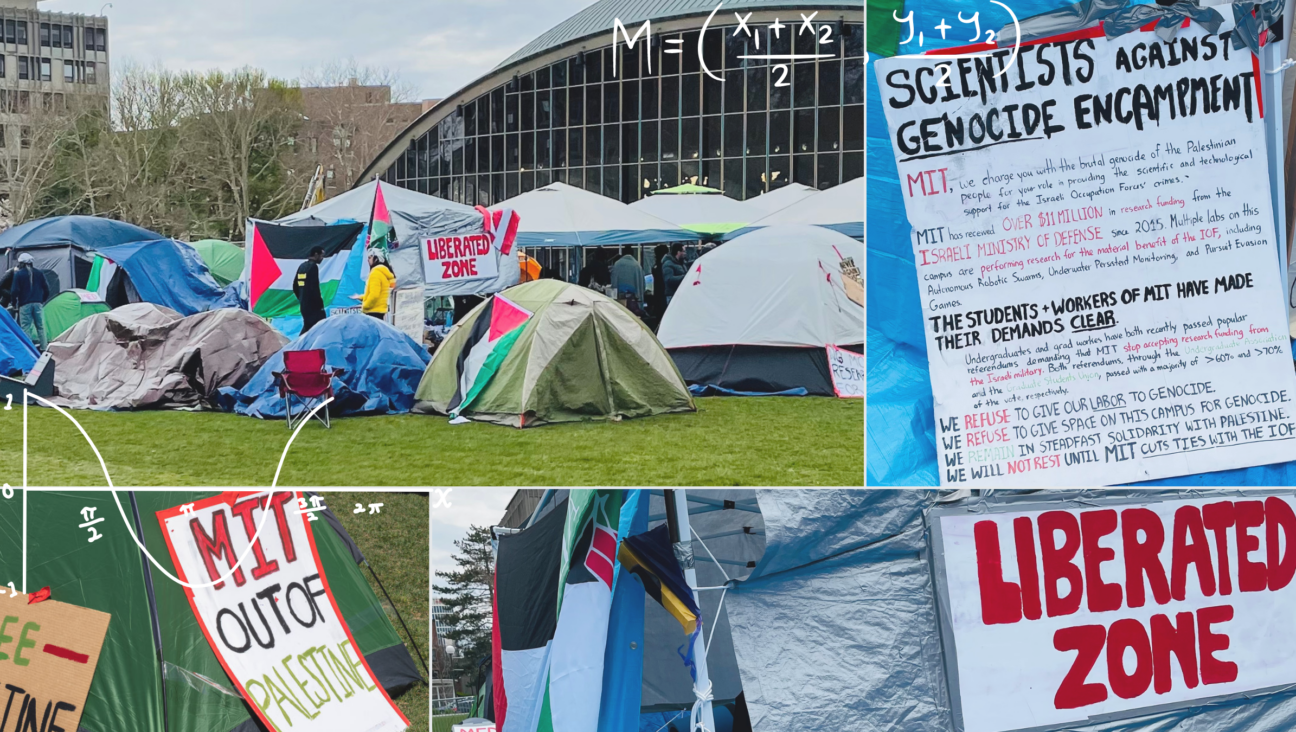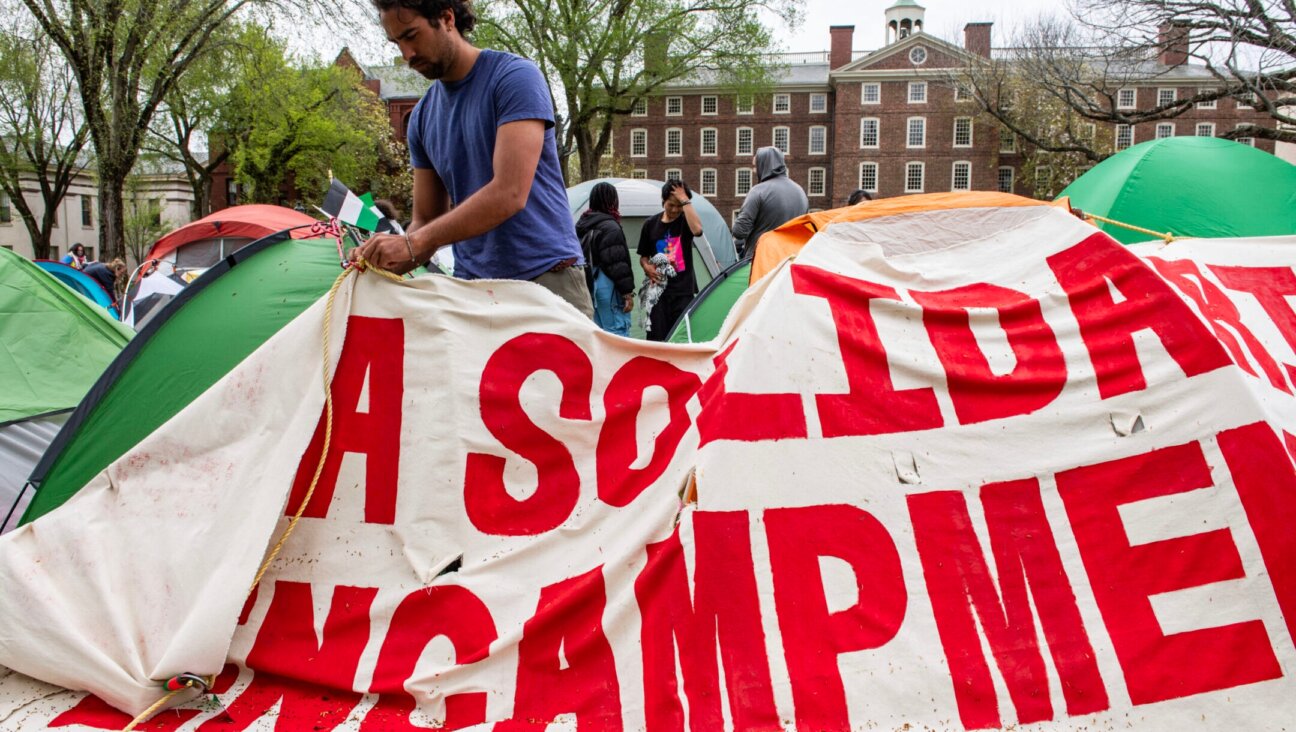Blistering Report Slams Claims Conference — Two Members Object to Findings

Image by getty images
The organization responsible for allocating billions of dollars in Holocaust restitution must commit to “a comprehensive restructure of…its culture structures, administration, management and governance,” according to a blistering 80-page report to board members of the Conference on Jewish Material Claims Against Germany obtained by the Forward.
Two members of the four-man committee presenting the investigation to the board, Abraham Biderman and Roman Kent, resigned from the committee in protest at the report, which found serious weaknesses in Claims Conference management.
“I believe that the report is inappropriately pejorative, contains material factual errors, and does not take into account the substantial management improvements made subsequent to 2001,” Biderman wrote in a July 7 letter announcing his resignation from the committee.
The committee based its findings on an investigation conducted by the Claims Conference ombudsman Shmuel Hollander. The investigation was commissioned following a story in the Forward that Claims Conference officials failed to heed an anonymous 2001 letter alleging fraud against key personnel in the organization’s New York claims processing office.
When the fraud was eventually discovered, in late 2009, two Holocaust funds had been defrauded of $57 million. But the committee found that had the 2001 letter been “properly addressed and investigated thoroughly” the fraud might have been discovered.
The allegations in the letter were investigated twice, first by a Claims Conference employee in Germany, then by a paralegal at the New York law firm of Julius Berman, the current Claims Conference chairman who at the time served as pro bono counsel to the Claims Conference.
Crucially, the report found a key weakness in the management structure of the Claims Conference: the alleged ringleader of the fraud, Semen Domnitser, had no superior. Although both investigations were cursory, they “should have served as an alert to Mr Domnitser’s superiors, had anyone been functioning in this capacity,” the committee found. Since Domnitser had no superior, the “fraud continued — and was perhaps even expanded — for eight years.”
The committee reported that “the absence of professional control systems, as well as the absence of computerization…, constituted a key factor in enabling, and certainly in facilitating, the fraud.”
“The organization was governed in a manner unacceptable in both public and corporate bodies,” the report said. “The apportionment of authority and the organizational structure in no way matched the needs of the organization, which was characterized by unreasonable levels of centralization.”
The report was circulated among Claims Conference board members ahead of their annual general meeting in New York on July 9.
In a 21-page letter appended to the document, Greg Schneider, executive vice-president of the Claims Conference, said the ombudsman’s report was “deeply flawed.” Since the 2001 letter was publicized, current and former Claims Conference officials have blamed the failure to adequately investigate the 2001 letter on Karl Brozik, the organization’s then-director in Germany, who died in 2004.
Although Brozik oversaw an initial investigation into the letter’s claims, the ombudsman found it “impossible to accept” that Brozik had any authority over Domnitser. But Schneider insisted that Brozik was responsible.
“The plain fact is that Brozik, while clearly not a manager in New York, was the second most senior staff member of the Claims Conference worldwide and certainly the most respected and knowledgable about [one of the defrauded funds],” Schneider wrote.
Schneider noted that the report “seems to go to great lengths to blame the New York staff, which I find perplexing and inexcusable.”
Schneider also criticized the ombudsman’s comments on the managerial culture of the Claims Conference. He said that such issues were outside the mandate of the ombudsman’s investigation — a fact that the ombudsman noted in his report — and that, given the ombudsman’s limited time and resources, he could not possibly have investigated this topic sufficiently. “I simply cannot accept this rush to judgement,” Schneider said.
The committee noted in its report that the 2001 letter was not disclosed to the Claims Conference board of directors either at the time it was received or subsequently. Rather than attributing this to a deliberate coverup, the committee found that the failure to disclose the letter was “part of the litany of lack of diligence, competence and judgment that, as the ombudsman has shown, characterized this event throughout.”
“I vehemently object to this language and accusation,” Schneider said.
Later, he wrote: “There is not a day that goes by in the grueling four years since I discovered the fraud that I don’t replay events in my head, wondering what else I could have done.”
“I considered Domnitser a trusted colleague,” he added. “And so, when I say that I was ‘shocked at the discovery in 2009,’ I mean it. I was lied to, fooled, hoodwinked, duped. I missed it. I am sorry.”
Thirty-one people, including 11 former Claims Conference employees, have pleaded guilty or been found guilty of fraud. The committee requested that after the final person is sentenced, the Claims Conference conducts a more “comprehensive investigation” of “the general conduct over many years that enabled such a large scale fraud to continue unimpeded.”
Contact Paul Berger at [email protected] or on Twitter @pdberger
Claims Conference Select Leadership Committee Report

I hope you appreciated this article. Before you go, I’d like to ask you to please support the Forward’s award-winning, nonprofit journalism during this critical time.
Now more than ever, American Jews need independent news they can trust, with reporting driven by truth, not ideology. We serve you, not any ideological agenda.
At a time when other newsrooms are closing or cutting back, the Forward has removed its paywall and invested additional resources to report on the ground from Israel and around the U.S. on the impact of the war, rising antisemitism and the protests on college campuses.
Readers like you make it all possible. Support our work by becoming a Forward Member and connect with our journalism and your community.
Make a gift of any size and become a Forward member today. You’ll support our mission to tell the American Jewish story fully and fairly.
— Rachel Fishman Feddersen, Publisher and CEO
Join our mission to tell the Jewish story fully and fairly.
























